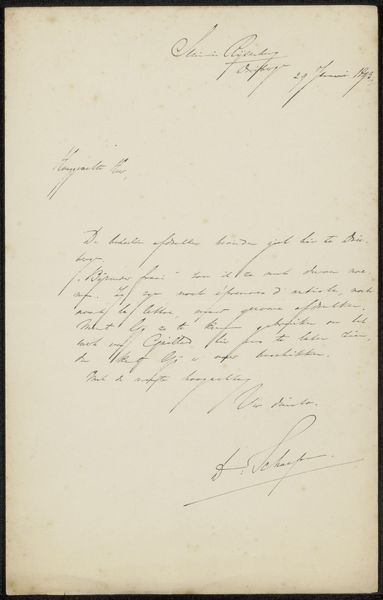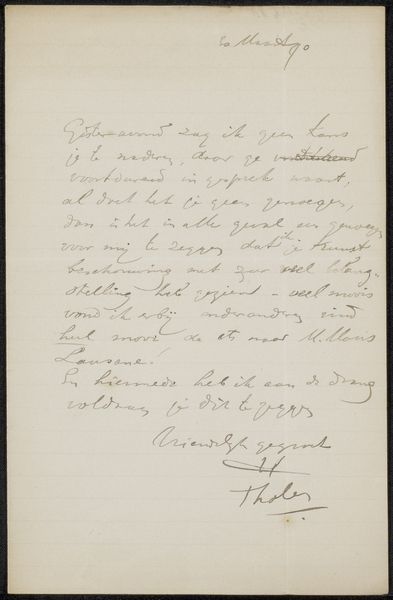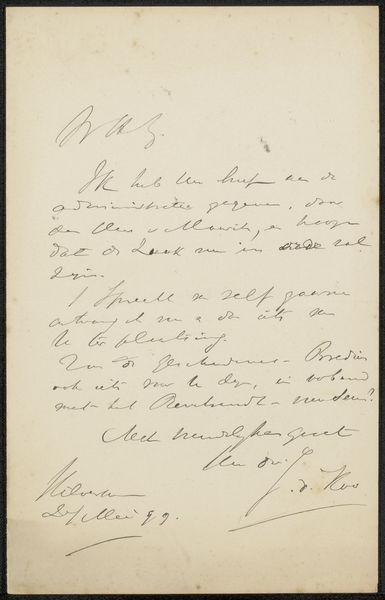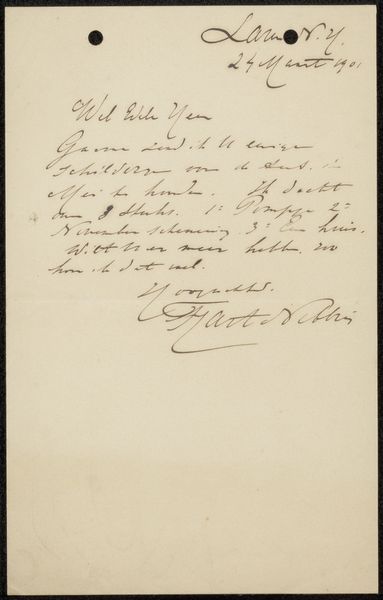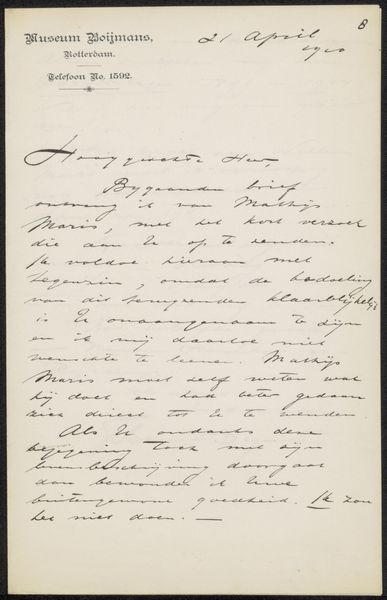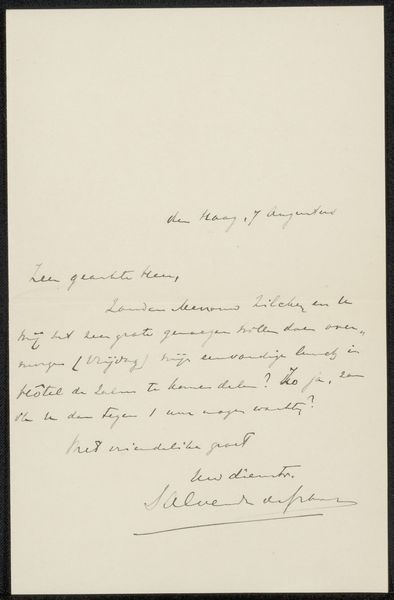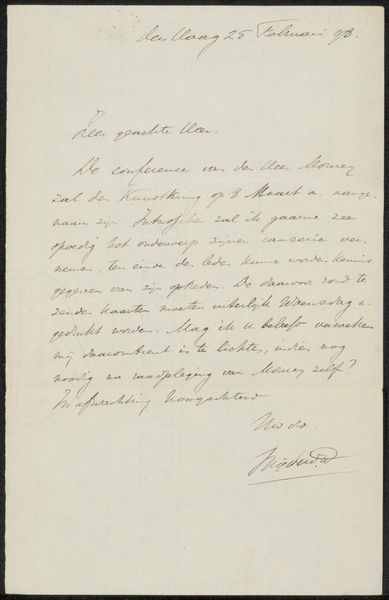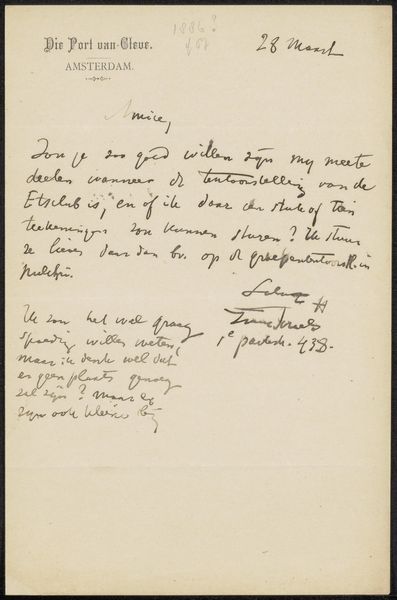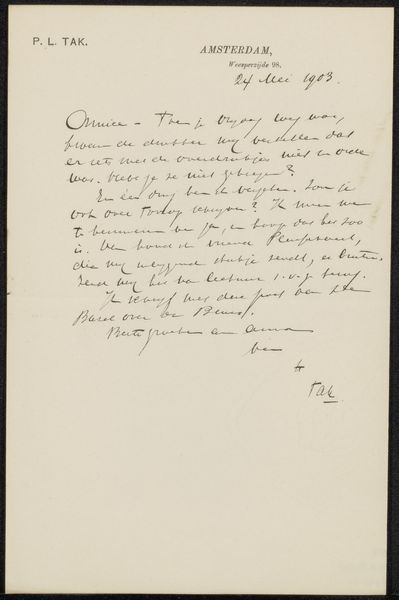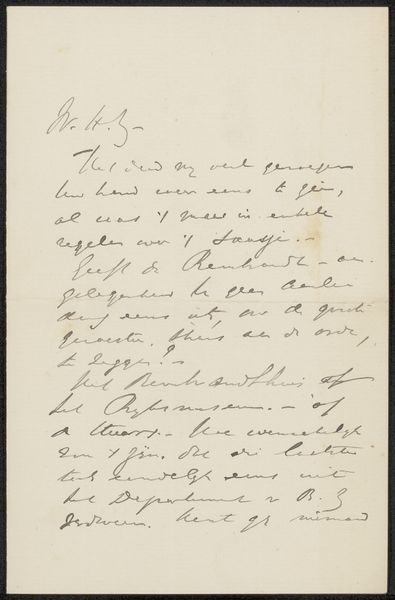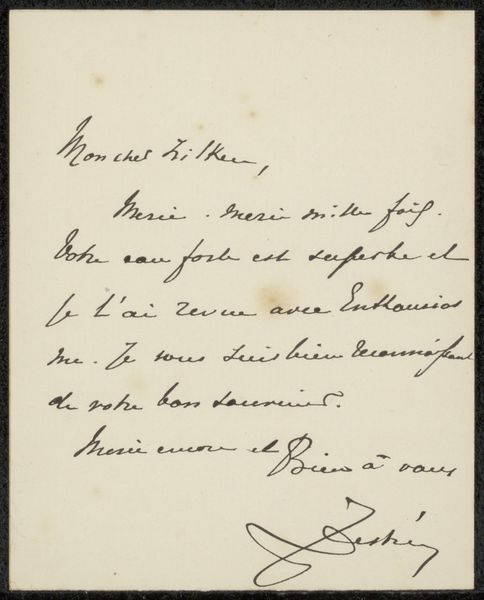
drawing, paper, ink, pen
#
drawing
#
ink drawing
#
pen sketch
#
hand drawn type
#
paper
#
personal sketchbook
#
ink
#
ink drawing experimentation
#
intimism
#
pen-ink sketch
#
ink colored
#
pen work
#
sketchbook drawing
#
pen
#
sketchbook art
Copyright: Rijks Museum: Open Domain
Curator: Here we have "Brief aan Philip Zilcken," a letter executed in ink on paper, sometime between 1867 and 1921, by Marinus van der Maarel. Editor: My immediate impression is intimacy; it feels like a peek into someone's private thoughts. The penmanship gives it a hurried, almost breathless quality. Curator: Indeed, it provides an interesting snapshot of the means of correspondence during that period. Notice the specific materials—the type of paper used, the likely source and quality of the ink, and how the pen itself shaped the individual strokes. Editor: And beyond the material, look at the symbolism. A handwritten letter itself signifies a level of care and intentionality absent from today's digital communications. The specific flourishes in the signature might also point to particular personality traits. It invites contemplation on human connections that persist through the imagery of time. Curator: It's also a document shaped by socio-economic realities. Paper, ink, and the very act of writing required access to resources and education, immediately restricting who could partake in this form of communication. Moreover, it’s a rejection of the emerging mass-produced printing, advocating the personal touch of handwritten letters. Editor: Absolutely. This medium, the personal letter, allows for a nuanced expression of sentiment, creating a tangible link between sender and recipient. Think about how future generations may look at these texts as symbols of an era that valued human interaction over the efficiency of mechanical reproductions. The words scrawled in the note invite you to almost feel what the letter sender might be communicating. Curator: We’re also seeing the residue of labour here. Each stroke of the pen, each word formed represents the artist's conscious effort to convey information or emotion, shaped by their skill, their physical capacity and by the conditions in which they are producing the document. Editor: I agree. It goes beyond simple information and reflects the values placed upon tangible communication in days past. The image becomes an object resonant with emotional, social and historic meanings, like memories preserved within ink and paper. Curator: Seeing it in this context reframes our appreciation. It invites a reevaluation of art and its cultural significance, particularly as we confront digital forms of communication. Editor: Precisely. Examining this artwork, one gains not only historical insight but a potent reminder of our inherent need for authentic exchange within our human family.
Comments
No comments
Be the first to comment and join the conversation on the ultimate creative platform.
